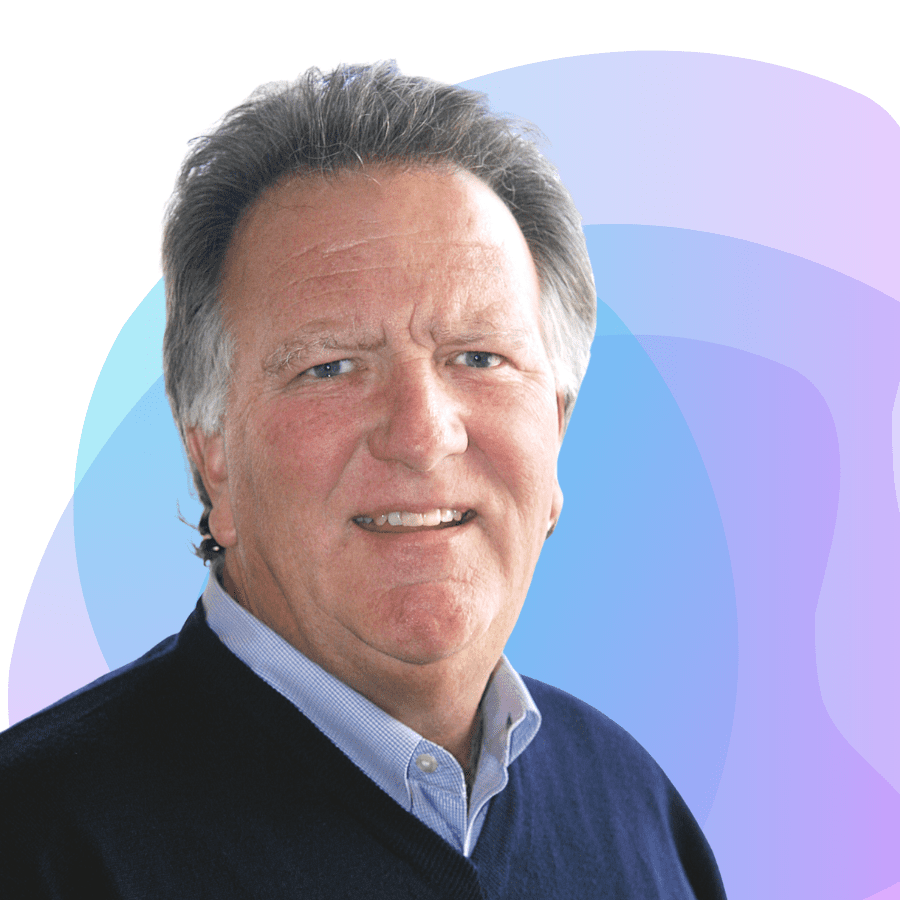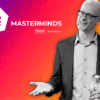

By David C Forman, bestselling author “Fearless Talent Choices”
WHY SHOULD YOU CARE?
All change is not the same. Some changes are simple, direct, and easy to understand. But most are not, and these require an understanding that complex change is more about the heart than the mind and then being able to use a different set of developmental tools to foster new perspectives.
Passing wisdom along to others is a thoughtful and supportive thing to do. It should enable us to learn from peoples’ experiences and not repeat past mistakes. Especially in a world filled with tumult, complexity, and relentless change, it is rewarding to convey clear, specific advice to colleagues and friends. But regardless how this makes us feel, does this make a difference? Do these conversations lead to improved performance?
There are certainly times when telling people what to do is absolutely appropriate and necessary. Children should not touch a hot stove, patients should take medicines prescribed by doctors, and people should be kind to each other. When needs are apparent and threaten health, safety and civility; clear, concise directions, especially to a junior audience, on what to do (and not do) are the most efficient and effective form of communication.
Problems start to arise, however, when people are asked to change behavior that they may not agree with, impacts others, and is likely to affect roles, practices, and prestige. The magnitude of change from the current to future state is also a significant factor. The greater the delta between the two, the greater the risk to change; and the more difficult it is to overcome the barriers to doing something unknown and different.
A fundamental problem with change discussions is that most of the emphasis is on the sender of advice and wisdom. We want to think that the more articulate and evidenced-based the message, the more likely the needed change will occur. If only we could be more persuasive and compelling, the gap between what gets said and done would narrow. But as Daniel Pink (2012) has noted, we spend at least 40% of our time trying to influence other people, and we are not very good at it. A key lesson in understanding why people won’t do what we would like them to do: It’s not the sender that matters most, it is the receiver.
Resistant Levels for Complex Change
There are three levels of resistance for complex change, and each is best served by different treatments. The first level is a slight or modest amount of change from the current to desired state that is not particularly disruptive or contentious. This level is not too personally threatening, risky, or uncertain to the change agent (i.e., the receiver). In this case, the right words from the sender can matter.
Simon Sinek (2009) has observed that we are often very good at telling people what to do, but not why to do it. This simple distinction makes all the difference to the receiver. The “why” provides the context for both what to do and how to do it. Without this reason, the advice lacks meaning and is easy to forget or discard. Usually, this type of modest change applies to implementing new policies that may be misunderstood or not popular; without the “why behind the what,” the receiver believes these changes are not important, don’t make sense, are a distraction, or not worth doing.
Daniel Pink recommends using words to influence people by asking questions so that receivers process the situation themselves. Receivers, then, come to the realization themselves by reflecting on the answers to the posed questions. This shifts responsibility and ownership for action to the receiver, as opposed to being told what to do by an external player.
The second level of change is more complex, riskier to implement, and has a psychological cost to the receiver. Because the risk-reward equation is complicated and there are more barriers to overcome, the use of words alone is insufficient to instigate this type of change. John Kotter (2002) came to the same conclusion by studying hundreds of change initiatives. He concluded that the successful projects were not based on “analyze-think” but “see-feel” change.
Because complex change is more a psychological than rational process, the treatment must be more affective as well. Words, data, and evidence are rational tools and therefore not the best fit for this level of more complicated change. Different ways of knowing and believing must be employed. The key again is to focus on the receiver and create situations in which the receiver sees and experiences the need to change directly. Kotter cites two examples.
- A large global manufacturer studied its purchasing practices and found tremendous variation across regions and plants. These variations resulted in inefficiencies and excessive costs. One example was the price of gloves for production workers. When data were presented to the purchasing leaders on the 500% delta in the price of comparable gloves, the purchasing agents were skeptical. Many saw this as an attempt to centralize needlessly and reduce the power and valuable relationships from local purchasing. As a result, nothing happened, until a global gathering of purchasing leaders. At this meeting, the purchasing agents were shown a table piled high with gloves from the different plants around the world. Each pair of gloves had a label showing the plant, costs, and materials. The agents were told to find their own plant’s gloves, join up with two other colleagues, discuss the differences among the quality and price of their gloves, and come up with two suggestions to improve this situation.
- A software company was developing a major new release of its best-selling application. The new interface was designed to be more graphical, intuitive, easier to use, and a step better than the competition. It was a big change and there was a lot of excitement before beta testing with prospective users. Unfortunately, testing did not go well. The product developers blamed the testing process, and the intelligence of the users and their preference for the older, more comfortable interface. Positions hardened and not much progress was made until the software developers attended the testing sessions themselves and saw that users were diligent, trying the best they could, but were still getting confused.
In these examples, words, evidence, and data were not enough to drive change. It took direct participation and observation by those implementing the change to instigate new actions. Seeing really was believing. Albert Einstein had similar observations when discussing changes he wanted to see in his students.
“I never try and teach my students anything. I only try to create an environment in which they can learn.”
The third level of change is the most complex, uncertain, and risky. The resistant levels are significant, difficult to overcome, and the likelihood that the project will not meet its objectives are high. In this case a more serious intervention is required to fundamentally repair the trust and collaboration among colleagues. It won’t be enough to just directly observe the issue (as in Level 2), the team infrastructure and culture must be rebuilt.
One of the most dramatic examples of this type of change occurred is in the world of sport. Volleyball was invented in the United States in 1896, and the U.S. had never won a major international competition through the 1970s. The reason: Other countries had better systems, resources, commitment, and teams. The individual volleyball talent in the U.S. was as good or better than the rest of the world, but it was inconsistent, and teamwork broke down under duress. A group of people decided to make changes in preparation for the 1984 Olympics in Los Angeles (Murray, 2022).
This team’s problems were not unusual: Too many cliques, big egos, not enough communication and transparency, lack of trust, wavering commitment, varied goals, and sporadic teamwork. The coaches recognized these issues and talked about them, but the message was not embraced by the players. They thought things were good enough and didn’t want to rock the boat. The solution: A highly impactful shared experience that took the team out of its comfort zone; put stars, subs, and coaches on equal footing; and created situations in which teammates had to trust and learn from each other.
The best volleyball players in the United States went from the comfort of training in San Diego to the remote wilderness of Utah in the dead of winter. They participated in an Outward Bound program that included snowshoes, rope lifts, rock climbing, blind navigational exercises with maps and compasses, and techniques to keep warm in 15 degree temperatures and reduced oxygen at 10,000 feet above sea level. This solution had nothing to do with technical volleyball skills; it had everything to do with being a better team. Over the two weeks, barriers started to come down, the team learned to trust each other, and work together more seamlessly. The result: a whole new style of play emerged to fit the player’s strengths, a gold medal was won, and the sport of volleyball was never quite the same.
Summary
Admittedly, the volleyball example is a bit extreme, but it does illustrate several key principles. First, focus on the receivers (players) because they are the ones that make change happen. Second, when resistance to change is high, words and evidence conveyed by coaches (in this case) are not sufficient to drive change. Participation, direct observation, and meaningful challenging experiences for the players are required. And third, when people “see-feel” change they understand it at a different level; it stays with them (stickiness) longer, and they are more likely to be invested in improving the situation.
The three levels of complex change are summarized below.
| Resistance Level | Focus | Treatment | Stickiness | Estimated Percentage* |
| Level 1: Slight | Sender | Words can work. Why, not just what. Pose questions for receiver. | Low to Medium | 15 to 20% |
| Level 2: Moderate | Receiver | Direct participation and observation of the problem. | Medium to High | 60% |
| Level 3: High | Receiver | Challenging experiences to build trust and improve working relationships. | High | 20% |
*Projected estimate based on personal experience and the work of Dan and Chip Heath in Switch (2010).
In most cases, then, the challenge is to design situations in which the change agents ( receivers) can directly participate, observe, and experience the need for change themselves. It is easy to tell people what to do. It is not easy to craft these types of direct experiential interventions, but they are the key to narrowing the gap between “what gets said and what gets done.” This is not a new revelation; it is in fact centuries old, but businesses are sometimes slow to react.
“If you tell me, I will listen
Lao Tze, Ancient Chinese proverb
If you show me, I will see
If you let me experience, I will learn.”
All change is not the same. Some changes are simple, direct, and easy to understand. But most are not, and these require an understanding that complex change is more about the heart than the mind and then being able to use a different set of developmental tools to foster new perspectives. Words, advice and even evidence aren’t strong enough to break the reluctance to trust and venture into the unknown territory that change represents. The tools that can penetrate this resistance are direct participation, observation, and engaging in new, challenging experiences by change agents. These tools may or may not be strong enough to overcome particularly difficult resistance, but they present the best opportunity to narrow the knowing-doing gap, move forward, and grow individually and organizationally.
Written by: Dave Forman
Change Management HR Strategy Strategy & Transformation
Previous post

- 264
- 5
labelArticles today2022.09.07.
How can we manage a radical transformation towards livable, sustainable and creative organizations?
WHY SHOULD YOU CARE?Good organizations combine a vibrant and creative life energy with human values, social responsibility and efficient production. To do this, we must go beyond the purely profit-oriented [...]
Similar posts

labelArticles today2024.10.21.
The success-recipe to build agile and future-ready organizations in 2025 and beyond








Post comments (0)